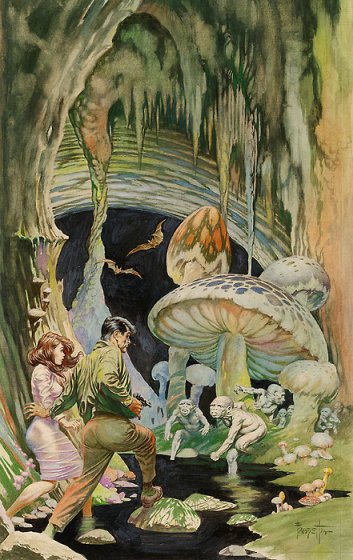While not exhaustive, this is a list of recurring story hooks common in superhero comics from the Silver Age on, though focused on the Silver and Bronze Ages. They are geared toward teams of heroes and those of moderate power level, as "street level" heroes can get into adventures just by going on patrol and spotting mundane crime. Still, they are probably useful at any level.
Assault: the heroes are attacked, either individually or as a group.
Challenge: An NPC challenges a hero to some sort of contest, be it combat, a chess match, etc.
Clandestine Attack: Heroes are plagued by some something not immediately recognizable as an attack (poor public relations, bad luck, problems with powers), but actually is.
Clash of Cultures: A misunderstanding or disagreement leads to conflict with heroes from another nation/world.
Crasher: An NPC of uncertain motivation appears in or invades the heroes' base/home.
Disaster: Sort of a natural or unnatural disaster occurs. This may also be a Clandestine Attack.
Doppelganger: A duplicate of one or more heroes or supporting cast members appears, either amnesic or claiming to be the genuine article.
Framed!: A hero or supporting cast member appears to be guilty of a major crime.
Gift: Heroes receive a mysterious item, base, or job offer.
Harbinger/Messenger: A stranger arrives either announcing the arrival of a greater threat, or to seek the heroes' help in stopping this threat.
Invasion: An attack by a force from another world, country, or time.
Invitation: Heroes are invited to a research facility, upscale party, movie studio, foreign country or the like.
Kidnapped: One or more of the heroes is kidnapped.
Manipulation: The heroes are being maneuvered into a course of action advantageous for the villain.
Masquerade: Someone is pretending to be one or more of the heroes.
New Hero: A new hero of uncertain motives appears either as a rival or aid to the heroes.
Quest: Similar to the challenge, but the heroes must overcome some challenge to acquire an item or achieve some other goal.
Return: A long-missing hero reappears.
Siege: An Assault of some sort traps the heroes in their base or home.
Shutdown: A political/public relations issue leads to authorities threatening action against the heroes.
Villain Multiplied: Previously solo villains form a team.
Upgrade: A villain or hero has a mysterious increase in power.
1 hour ago

























